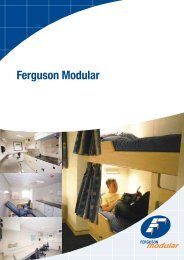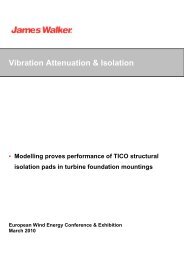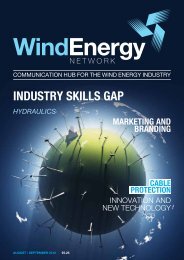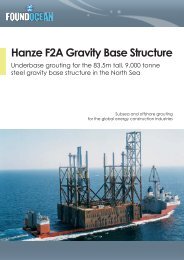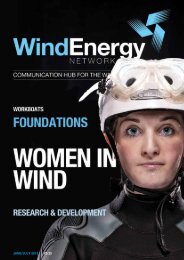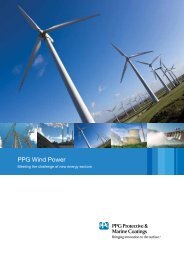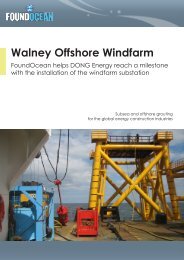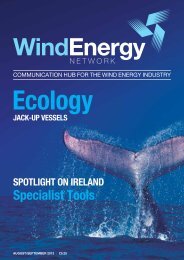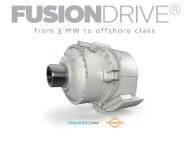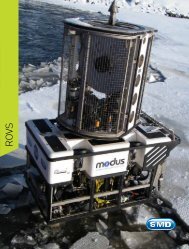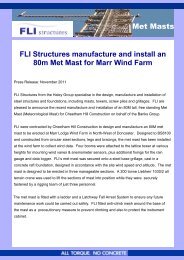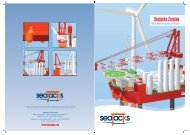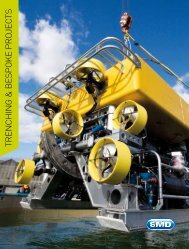WORKING AT HEIGHTS - Wind Energy Network
WORKING AT HEIGHTS - Wind Energy Network
WORKING AT HEIGHTS - Wind Energy Network
Create successful ePaper yourself
Turn your PDF publications into a flip-book with our unique Google optimized e-Paper software.
metmasts featureMETMASTSAn alternativesolutionOcean Resource has twometeorological mast designsmarketed under its Xanthus portfolioof products.Gravity buoyant concrete bases– SeaMet and OceanMetBoth SeaMet and OceanMet are basedupon Ocean Resource’s tested gravitybuoyant concrete bases that enable bothdesigns to be easily relocated and re-usedmany times over their twenty five yeardesign lives.SeaMetSeaMet is a self-installing 100m highoffshore meteorological mast andmonitoring platform for water depths up to60m that utilises a tubular hull containinga telescopic lattice structure fixed to a selffloating concrete and steel cellular gravitybase by means of a universal joint.OceanMetOceanMet is a self installing 100m highmeteorological mast and monitoringplatform for water depths between40m and 200m that utilises a watertighttubular support column containing atelescopic lattice mast fixed to a floatingsupport structure, which consists of fourindependent steel watertight tanks linkedto the central mast column through a trusssystem.Gravity Buoyant System (GBS)OceanMet is tethered to a rectangularconcrete and steel cellular GBSfoundation comprising several separateballast compartments. The foundationis designed to sit on the sea bed and toresist the lateral forces imposed upon it byits buoy, tower and tethers.tether tension (Tension Leg / TLP structure)with only the support column protrudingabove the surface, thus minimising thefatigue impact of breaking waves.Built and assembled onshoreSeaMet and OceanMet are both fully builtand assembled onshore, and then usingonly standard ocean tugs, both structuresare easily deployed and commissionedoffshore in single trips lasting a matterof a few hours, thus also mitigatingthe uncertainties of weather. Landingplatforms and access decks are providedon both SeaMet and OceanMet to allowboarding from a boat.Lidar arraysFor Lidar arrays, a much lighter versionof SeaMet is available without the maststructure, and OceanMet (Lidar) buoys aresuitable for depths greater than 30m.OceanMet (Lidar) utilises the sameprinciples as its larger sibling, but consistof a single bulbous hull.Relocation advantagesSeaMet and OceanMet are both readilyrecovered and re-deployed with minimallegacy impact, meaning that instead ofusing fixed masts that soon becomeredundant; a single SeaMet or OceanMetcan be relocated several times at afraction of the cost of a new build and withno legacy impact.Ocean Resourcewww.xanthusenergy.comClick to view more infoThe mast support structure is designedto remain below the water under positive100www.windenergynetwork.co.uk



